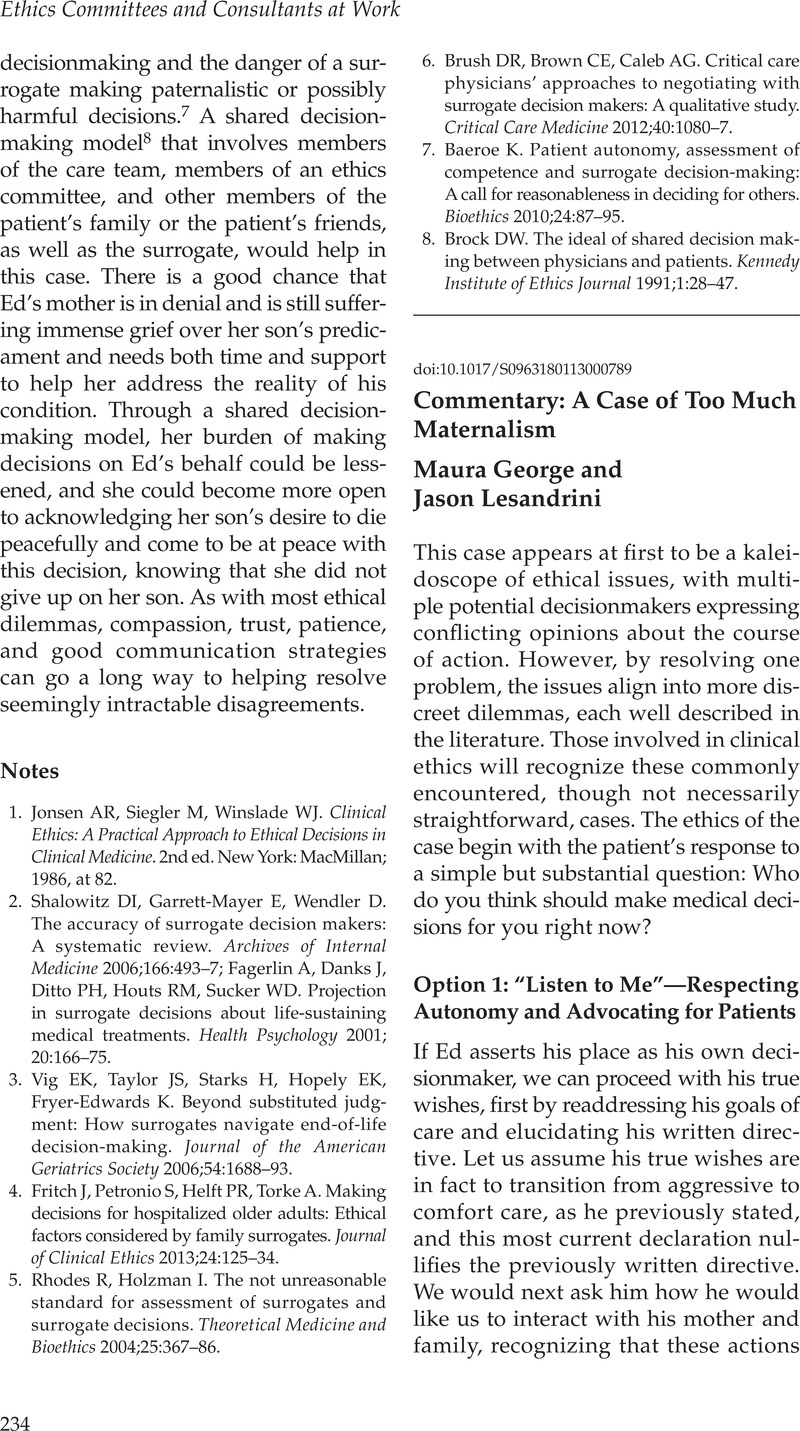Published online by Cambridge University Press: 05 February 2014

1. Berger, JT. Patients’ interests in their family members’ well-being: An overlooked, fundamental consideration within substituted judgments. Journal of Clinical Ethics 2005;16(1):3–10.CrossRefGoogle ScholarPubMed
2. Novack, DH, Detering, BJ, Arnold, R, Forrow, L, Ladinsky, M, Pezzullo, JC. Physicians’ attitudes toward using deception to resolve difficult ethical problems. JAMA 1989;261(20): 2980–5.CrossRefGoogle ScholarPubMed
3. Bloche, MG. Fidelity and deceit at the bedside. JAMA 2000;283(14):1881–4, at 1884.CrossRefGoogle ScholarPubMed
4. Ho, A. Relational autonomy or undue pressure? Family’s role in medical decision-making. Scandinavian Journal of Caring Science 2008;22(1):128–35.CrossRefGoogle ScholarPubMed
5. American Medical Association. Principles of Medical Ethics; 2013; available at http://www.ama-assn.org/ama/pub/physician-resources/medical-ethics/code-medical-ethics/principles-medical-ethics.page (last accessed 26 Sept 2013).
6. See note 4, Ho 2008, at 130.
7. Berger, JT. What about process? Limitations in advance directives, care planning, and noncapacitated decision making. American Journal of Bioethics 2010;10(4):33–4.CrossRefGoogle ScholarPubMed
8. See note 7, Berger 2010, at 34.
9. See note 7, Berger 2010, at 33.
10. Rid, A, Wendler, D. Can we improve treatment decision-making for incapacitated patients? Hastings Center Report 2010;40(5):36–45.CrossRefGoogle Scholar
11. See note 1, Berger 2005.
12. Jennings, B, Wolf, SM, Berlinge, N. The Hastings Center Guidelines for Decisions on Life-Sustaining Treatment and Care Near the End of Life. 2nd ed. Oxford: Oxford University Press; 2013, at 52.Google Scholar
13. Berger, JT, DeRenzo, EG, Schwartz, J. Surrogate decision making: Reconciling ethical theory and clinical practice. Annals of Internal Medicine 2008;149(1):48–53.CrossRefGoogle ScholarPubMed
14. See note 13, Berger et al. 2008.
15. Quill, TE, Arnold, R, Back, AL. Discussing treatment preferences with patients who want “everything.” Annals of Internal Medicine 2009;151(5):345–9.CrossRefGoogle ScholarPubMed
16. See note 4, Ho 2008.